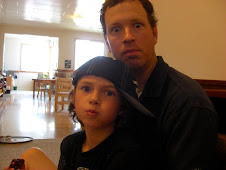Here are the questions I ask recommending teachers and the corresponding choices for response that they have. I assign points to the answers and use the "scores" on the matrix of selection we use throughout the process.
From the form that goes to recommending teachers...
AVID students have high potential for college success but lack college-going culture. AVID candidates are in the “middle” and would not succeed in a rigorous curriculum without the support of the AVID Class, and might be:
Traditionally underserved in colleges.
- Disadvantaged (often measured by free and reduced lunch status).
- The first-time college attendee from a family (first generation college students are children whose parents have not completed a four year degree).
- Any combination of the above.
Consider these two important factors when evaluating students:
1. Is the student AVID-like or At Risk? The goal for an At Risk student is to graduate from high school and the goal for an AVID student is to be successful in a four year university.
2. Does the student have the motivation and desire to prepare for entrance to a four year college or university?
Directions: Please circle one for each of the 11 statements.
1. The student is:
Absent four (4) times or more per month. Less than four (4) times per month.
2. The student’s GPA is:
0.00-0.99. 1.0-1.99. 3.51-4.00. 2.00-3.50.
3. The student’s work is turned in:
Not at all. Mostly late. Mostly on time. Always on time.
4. On average, the student’s work is done:
With no pace. At a poor pace (often a last minute rush to finish). At a steady pace.
5. The student collaborates well with:
No one. Friends. Most people. All people.
6. The student gets referred to the office for behavior:
Often. Once in awhile. Never.
7. The student gets in classroom trouble for minor behavior issues like talking out of turn:
Often. Once in awhile. Never.
8. The student reads books:
Never. Sometimes when assigned. When assigned. When assigned and on their own.
9. On an average assignment, the student:
Does not do the assignment.
The student does not meet the objectives.
The student meets a few of the objectives.
The student meets the objectives.
The student exceeds the objectives.
10. On an average assignment, the student:
Puts in little or no effort.
Puts some effort into the assignment but stops working when difficulties arise.
Works until the assignment is completed and continues working even when difficulties arise.
Works until the assignment is completed and continues working even when difficulties arise. Difficulties for this student are seen as opportunities to strengthen understanding.
11. The student is mostly:
At Risk Neither AVID-Like
Comments (do not feel obligated to write unless you feel we need more information. Students will not be evaluated poorly because you did not write more comments).

